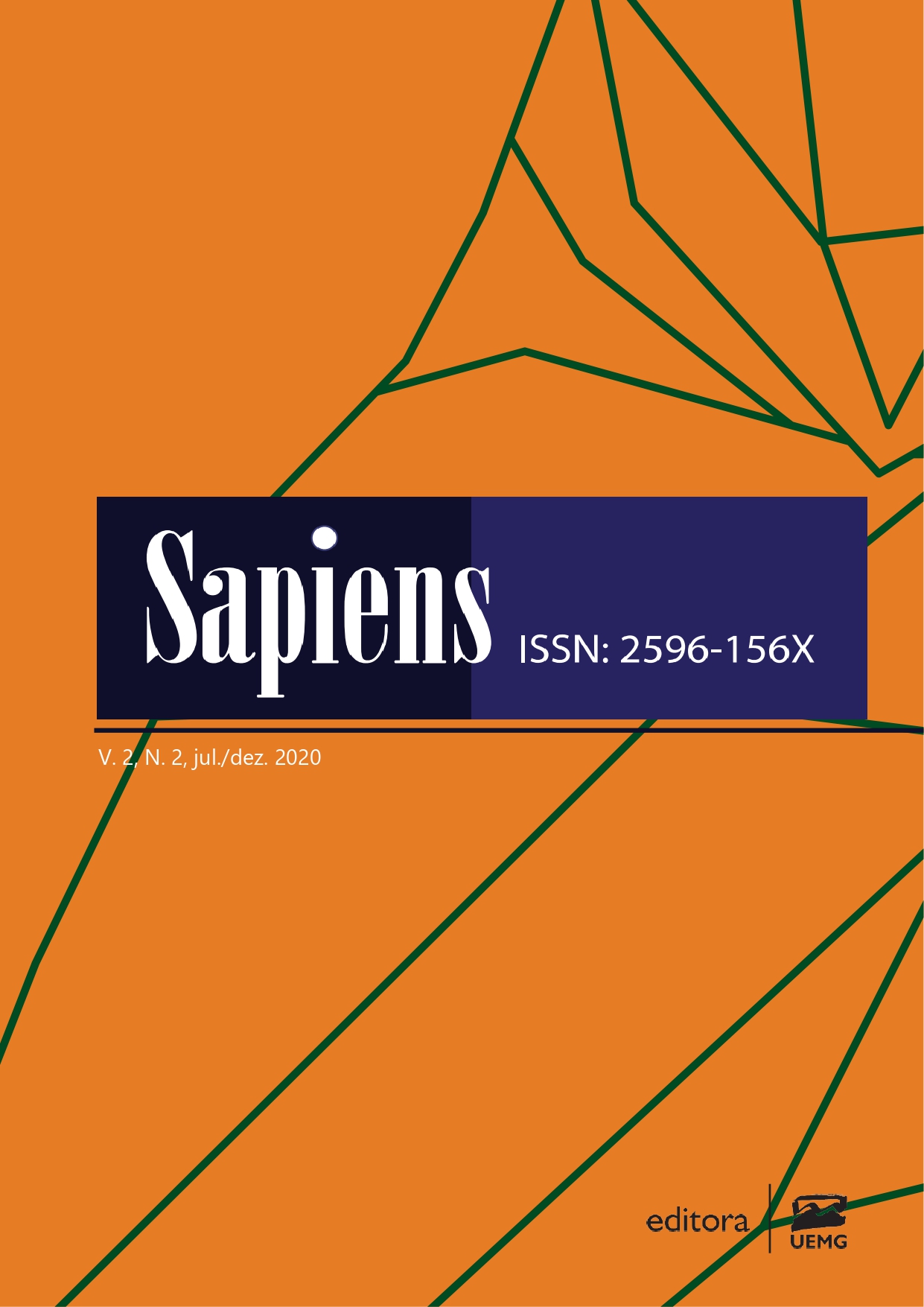A (re)emergência das doenças nas sociedades contemporâneas
Palavras-chave:
PANDEMIA, DOENÇAS EMERGENTES, DOENÇAS REEMERGENTES, SOCIEDADESResumo
Doenças emergentes são aquelas que surgem com impacto significativo sobre o ser humano, devido à gravidade com a qual acomete um indivíduo, com potencialidade para deixar sequelas limitadoras e até mesmo causar a morte, além das repercussões sociais relacionadas à sua prevalência. As doenças reemergentes são aquelas que são conhecidas há algum tempo e que, após serem controladas, reapareceram, causando assim uma grande preocupação no âmbito da saúde pública. Um número muito grande de fatores está envolvido na determinação da emergência e reemergência de doenças infecciosas, tanto nas sociedades mais desenvolvidas quanto nas menos desenvolvidas – todas vulneráveis à introdução de novas ou antigas infecções. Assim, este artigo apresenta e discute fatores envolvidos na (re)emergência de agentes infecciosos nas sociedades contemporâneas, tais como: mudanças ecológicas, desenvolvimento econômico, comportamento humano, indústria/tecnologia, a saúde pública e os próprios agentes infecciosos.
Referências
ALLEN, T., MURRAY, K.A., ZAMBRANA-TORRELIO, C., MORSE, S.S., RONDININI, C., DIMARCO, M., BREIT, N., OLIVAL, K.J. e DASZAK, P. Global hotspots and correlates of emerging zoonotic diseases. Nature Communications, v. 8, p. 1124, 2017. <https://www.nature.com/articles/s41467-017-00923-8>. Acesso em: 27 nov. 2020.
ASSAD, L. Relações perigosas: aumento de temperatura e doenças negligenciadas. Ciência e Cultura, v. 68, n. 1, p. 14-16, 2016. <http://cienciaecultura.bvs.br/scielo.php?script=sci_arttext&pid=S000967252016000100007&lng=en&nrm=iso>. Acesso em: 26 nov. 2020.
BARCELLOS, C., MONTEIRO, A.M.V., CORVALÁN, C., GURGEL, H.C., CARVALHO, M.S., ARTAXO, P., et al. Mudanças climáticas e ambientais e as doenças infecciosas: cenários e incertezas para o Brasil. Epidemiologia e Serviços de Saúde, v. 18, n. 3, p. 285-304, 2009. <http://scielo.iec.gov.br/scielo.php?script=sci_arttext&pid=S167949742009000300011&lng=pt&nrm=iso>. Acesso em: 26 nov. 2020.
MORENS, D. e FAUCI, A.S. Emerging Pandemic Diseases: How We Got to COVID-19. Cell, v. 182, n. 5, p. 1077-1092, 2020. <https://www.cell.com/cell/fulltext/S0092-8674(20)310126?_returnURL=https%3A%2F%2Flinkinghub.elsevier.com%2Fretrieve%2Fpii%2FS0092867420310126%3Fshowall%3Dtrue>. Acesso em: 27 nov. 2020.
DOBSON, A.P. e CARPER, E.R. Infectious diseases and human population history. BioScience, v. 46, p. 115-126, 1996. <http://www.ogrod.uw.edu.pl/__data/assets/pdf_file/0010/2161/13a.pdf>. Acesso em: 27 nov. 2020.
EPSTEIN, P.R. Is global warming harmful to health? Scientific American, v. 283, n.2, p. 50-57, 2000. <https://www.scientificamerican.com/article/is-global-warming-harmful/>. Acesso em: 27 nov. 2020.
FAUCI, A.S. e MORENS, D.M. The perpetual challenge of infectious diseases. New England Journal and Medicine, v. 366, p. 454-461, 2012. <https://www.nejm.org/doi/full/10.1056/nejmra1108296>. Acesso em: 27 nov. 2020.
HAY, S.I., GUERRA, C.A., TATEM, A.J., NOOR, A.M. e SNOW, R.W. The global distribution and population at risk of malaria: past, present and future. Lancet Infectious Diseases, v. 4, n. 6, p. 327-336, 2004. <https://www.ncbi.nlm.nih.gov/pmc/articles/PMC3145123/pdf/ukmss-3952.pdf>. Acesso em: 27 nov. 2020.
MORENS, D.M. Antibody-dependent enhancement of infection and the pathogenesis of viral disease. Clinical and Infectious Diseases, v. 19, p. 500-512, 1994. <https://www.ncbi.nlm.nih.gov/pmc/articles/PMC7119964/>. Acesso em: 27 nov. 2020.
MORENS, D.M., BREMAN, J.G., CALISHER, C.H., DOHERTY, P.C., HAHN, B.H., KEUSCH, G.T., KRAMER, L.D., LEDUC, J.W., MONATH, T.P. e TAUBENBERGER, J.K. The Origin of COVID-19 and Why It Matters. American Journal of Tropical Medicine and Hygiene, v. 103, n. 3, p. 955-959, 2020. <https://europepmc.org/article/med/32700664>. Acesso em: 27 nov. 2020.
MORENS, D.M. e FAUCI, A.S. Emerging infectious diseases in 2012: 20 years after the institute of medicine report. MBio, v. 3, e00494-12, 2012. <https://www.ncbi.nlm.nih.gov/pmc/articles/PMC3520107/pdf/mBio.00494-12.pdf>. Acesso em: 27 nov. 2020.
MORENS, D.M., FOLKERS, G.K. e FAUCI, A.S. The challenge of emerging and re-emerging infectious diseases. Nature, v. 430, p. 242-249, 2004. <https://www.ncbi.nlm.nih.gov/pmc/articles/PMC7094993/pdf/41586_2004_Article_BFnature02759.pdf>. Acesso em: 27 nov. 2020.
MORENS, D.M. e FAUCI, A.S. Emerging infectious diseases in 2012: 20 years after the institute of medicine report. MBio, v. 3, e00494-12, 2012. <https://www.ncbi.nlm.nih.gov/pmc/articles/PMC3520107/>. Acesso em: 27 nov. 2020.
MORENS, D.M. e TAUBENBERGER, J.K. The 1918 Influenza Pandemic: A Still-Mysterious Litmus Test for Pandemic Prevention and Control. In Preparing for Pandemics in the Modern World, 1 ed., EUA., C.C. Blackburn ed. (Texas A &MUniversity Press), 2020.
MORENS, D.M., FOLKERS, G.K. e FAUCI, A.S. The challenge of emerging and re-emerging infectious diseases. Nature, v. 430, p. 242–249, 2004. <https://www.nature.com/articles/nature02759>. Acesso em: 27 nov. 2020.
MORENS, D.M., FOLKERS, G.K. e FAUCI, A.S. Emerging infections: a perpetual challenge. Lancet Infectious Diseases, v. 8, p. 710–719, 2008. <https://www.ncbi.nlm.nih.gov/pmc/articles/PMC2599922/>. Acesso em 27 nov. 2020.
MORENS, D.M., FOLKERS, G.K. e FAUCI, A.S. Eastern Equine Encephalitis Virus - Another Emergent Arbovirus in the United States. New England Journal Medicine, v. 381, p. 1989–1992, 2019. < https://pubmed.ncbi.nlm.nih.gov/31747726/>. Acesso em: 27 nov. 2020.
PEDROSO, E.R.P. e ROCHA, M.O.C. Infecções emergentes e reemergentes. Revista Medica Minas Gerais, v. 19, n. 2, p. 140-145, 2009. <https://pesquisa.bvsalud.org/portal/resource/pt/lil-540876>. Acesso em 27 nov. 2020.
TSETSARKIN, K.A. e WEAVER, S.C. Sequential adaptive mutations enhance efficient vector switching by Chikungunya virus and its epidemic emergence. PLoS Pathogens, v. 7, e1002412, 2011. <https://journals.plos.org/plospathogens/article?id=10.1371/journal.ppat.1002412>. Acesso em: 27 nov. 2020.



